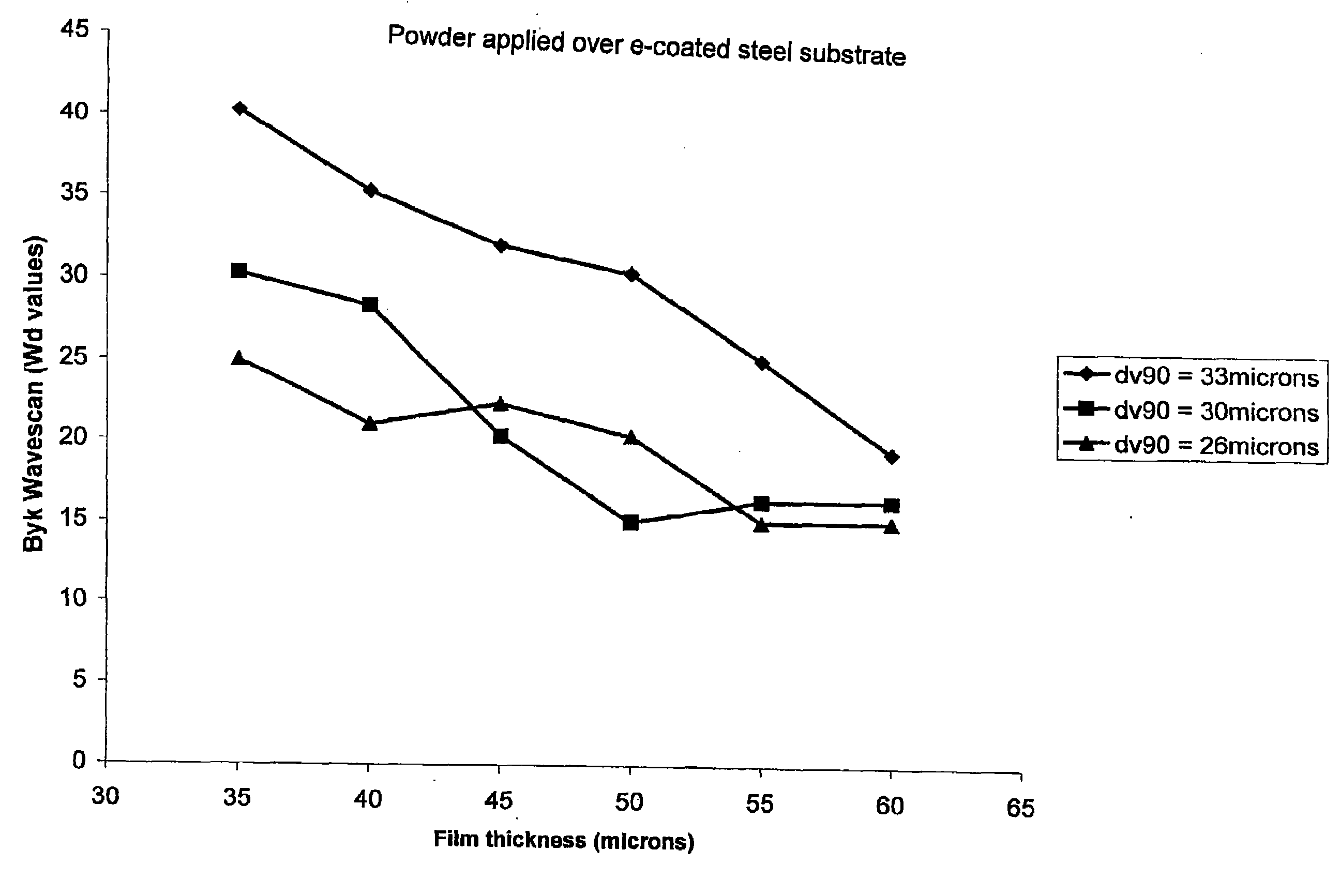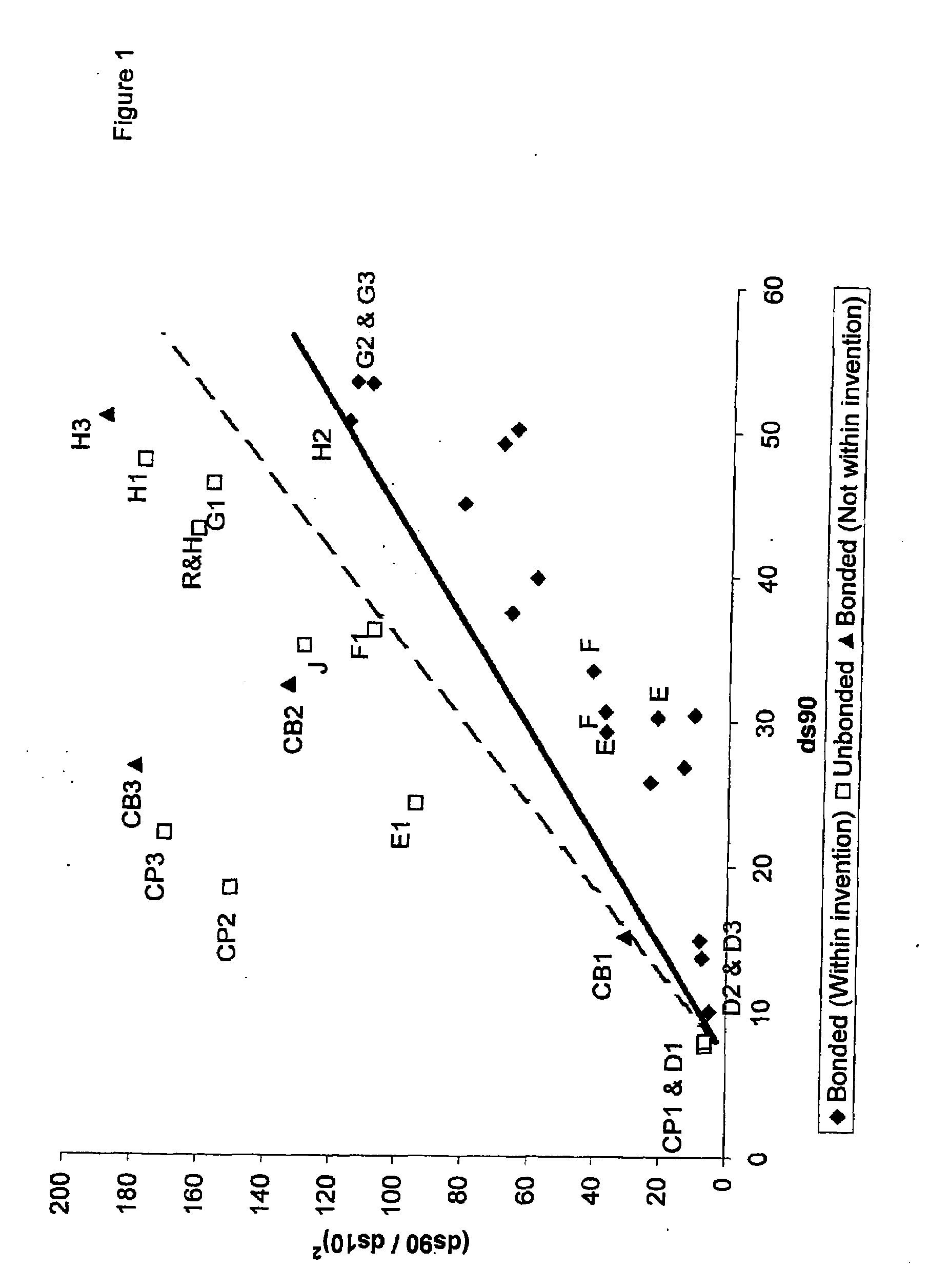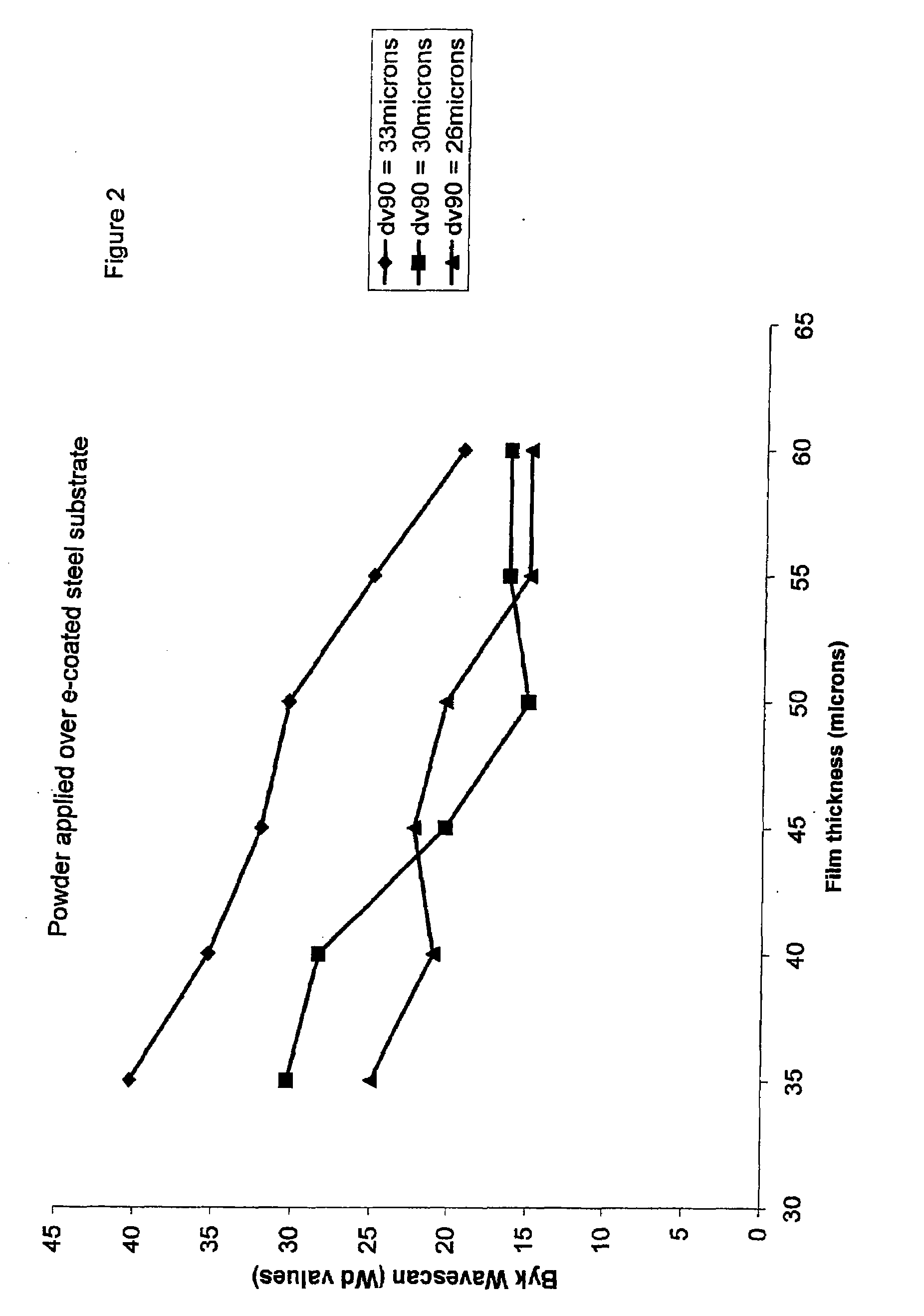Powder coating materials
a technology of coating materials and powder, applied in coatings, layered products, transportation and packaging, etc., can solve the problems of less mean particle size, less particle more particles at the lower end of the distribution, so as to improve the handling and application properties
- Summary
- Abstract
- Description
- Claims
- Application Information
AI Technical Summary
Benefits of technology
Problems solved by technology
Method used
Image
Examples
example 1
a) Bonding of Powders D1 to H1
Preparation of Powders of the Invention D2 to H2
[0113]Five unbonded powder formulations (not according to the invention) were prepared from the base formulation VI by extrusion on a PKL 46 BUS extruder at a barrel temperature of 120° C. The extrudate was cooled down and flattened on a cooling cylinder just outside the extruder die and then kibbled to flakes. Milling was carried out under the conditions given in Table below.
TABLE 1PowderMill employedMill settingsSieve sizeDv (99)D1Hosakawa ACGSpeedN / A15.8 μmJetmill110000 rpmE1Hosakawa ACGSpeed 44 μm44.8 μmJetmill14350 rpmF1Hosakawa ACGSpeed 75 μm68.5 μmJetmill13150 rpmG1Hosakawa ACMRotor 5600 rpm106 μm90.1 μmMill 40classifier 1500 rpmH1PPSRotor 7200 rpm106 μm110.5 μm (DCMT Mill)classifier 4800 rpm1All powders manufactured by the Jetmill had to be premilled to a course powder before milling.
[0114]Particle size details (by volume) of the resulting powders are given in Table 2 below.
TABLE 2Powder% % D (v, 5...
example 2
[0127]The following Example describes the preparation and testing of further powders with a particle size distribution according to the invention. Particle size data reported was obtained using the Mastersizer X laser light-scattering device from Malvern Instruments, refractive index 1.45, absorption index 0.1.
[0128]Two powders, C6 and C20, of formulation V, were prepared by extruding as in Example 1 above and micronising the chip in an Alpine ACM5 mill. This mill utilises a twin-cyclone collection mechanism and the preparation of powders was carried out by the standard operating procedure whereby the fine fraction from the second cyclone is discarded, the product collected being the product from the base of Cyclone I. Details of the particle sizes of the powders produced are given in Table 15 below. As can be seen, powder C20, with the lower d(v,90), contains much higher proportions of sub-10 μm and sub-5 μm particles.
TABLE 15StartingPowder% % D (v, 50) (μm)D (v, 90) (μm)C64.716.82...
example 3
[0135]The following Example describes the preparation of further powders by the bonding process, and illustrates further how bonding conditions influence the particle size distribution of the powder produced. Bonding should be carried out such that the relationship [d(s,90) d(s,10)]2÷[d(s,90)−7]≦3.5 is met.
[0136]Further powder coating materials C1, CB2, C4, C8, C9, C11, C12 and C17 to C19 as shown in Table 20 below were prepared using the Alpine ACM5 mill under standard operating conditions as above whereby the product collected is the product from the base of cyclone 1 (identified as Cycl I in the subsequent Table), or by making efforts to collect the entire product from the mill, the operation of the mill's twin-cyclone collection system then being described as “total collect” mode (identified as “Total Col” in the Table). (In total collect mode the product from the base of both cyclones was collected, the airflow through the milling and collection system being adjusted to minimis...
PUM
| Property | Measurement | Unit |
|---|---|---|
| particle size | aaaaa | aaaaa |
| particle size distribution | aaaaa | aaaaa |
| glass transition temperature | aaaaa | aaaaa |
Abstract
Description
Claims
Application Information
 Login to View More
Login to View More - R&D
- Intellectual Property
- Life Sciences
- Materials
- Tech Scout
- Unparalleled Data Quality
- Higher Quality Content
- 60% Fewer Hallucinations
Browse by: Latest US Patents, China's latest patents, Technical Efficacy Thesaurus, Application Domain, Technology Topic, Popular Technical Reports.
© 2025 PatSnap. All rights reserved.Legal|Privacy policy|Modern Slavery Act Transparency Statement|Sitemap|About US| Contact US: help@patsnap.com



